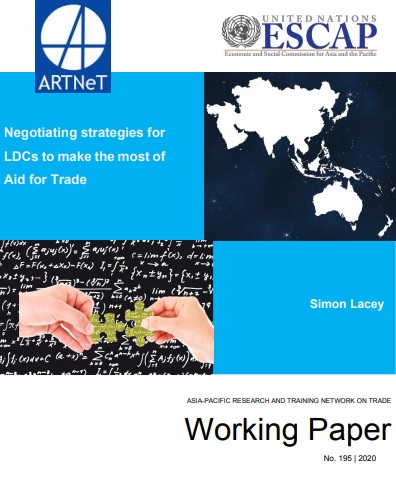Negotiating strategies for LDCs to make the most of Aid for Trade

This paper explores the kinds of demands governments in Least Developed Countries (LDCs) could and should be formulating and submitting in the context of the ecommerce negotiations at the World Trade Organisation (WTO) as well as any current or proposed Free Trade Agreements (FTAs) they are engaged in with advanced industrialized countries.
It begins by discussing the differences between Special and Differential Treatment (S&D) and Aid for Trade (AfT) and affirms that in today’s environment, developing countries and LDCs should never miss an opportunity to engage in trade negotiations with more economically advanced trading partners, since even if limited market access gains are on offer, the prospect of obtaining other concessions in different parts of the AfT agenda could still make for tangible and significant negotiating outcomes for these countries.
This paper focuses on negotiating strategies with respect to two kinds of broadly formulated AfT commitments. The first is infrastructure to alleviate supply-side constraints across transport infrastructure, testing and certification capacity and communications network infrastructure for online connectivity. The second set of AfT commitments this paper seeks to provide developing country negotiators advice on is in the area of trade finance, which has become such a prevalent problem for small and medium-sized enterprises (SMEs) in developing countries that even the WTO Secretariat has started to refer to this as a non-tariff measure.
As in all negotiations, the key to success here is preparation. This paper provides some advice on how best to prepare, formulate and substantiate any AfT requests in order to both maximize the chance of success as well as maximize the difficulty for negotiators from developed countries (who must decide on whether to grant an AfT request) to decline any reasonable requests that are tabled.
